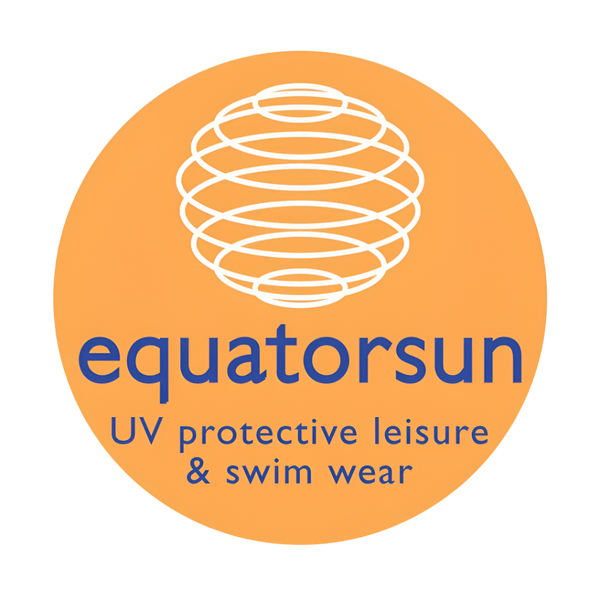Melanoma Awareness Month 2025
This May, discover why melanoma awareness matters more than ever. Learn prevention tips, early warning signs, and how sun protection can save lives.
Reading Time: 10 minutes

Melanoma: The Beginning of equatorsun
In 2004, the equatorsun founder, Annette - a mum of three - was diagnosed with melanoma. The devastating reality of sun damage could never be more apparent. Frustrated by the lack of practical, reliable sun protection, she founded equatorsun to empower others, herself, and her family to enjoy the sun safely through sun protective clothing.
She discovered UPF clothing and made it her mission to bring stylish, protective clothing to more people. Sadly, Annette passed away in 2009 at just 43. Today, her family continues equatorsun, the mission she started, - distributing sun protective clothing to prevent others from experiencing the pain of losing someone too soon.
Melanoma in 2025: A Rising Threat
Melanoma is the most serious type of skin cancer - and it's on the rise. In the UK, over 17,500 people are diagnosed each year, and approximately 2,300 lose their lives. Globally, over 325,000 people are diagnosed annually.
It’s one of the most common cancers in people under 30. The good news? If caught early, it’s highly treatable. The challenge is awareness - which is why Melanoma Awareness Month is so critical.
Early Detection: Know the ABCDE Signs
Melanoma can often be detected early through changes in the skin. The ABCDE method helps:
- A – Asymmetry: One half of the mole doesn’t match the other.
- B – Border: Irregular, ragged, or blurred edges.
- C – Colour: Uneven colour or multiple shades.
- D – Diameter: Larger than 6mm (about a pencil eraser).
- E – Evolving: Any change in size, shape, colour, or behaviour.
Check your skin monthly and speak to your GP about any changes. Early detection saves lives.
Prevention Tips: Sun Safety Starts With You
- Seek shade between 11am and 3pm.
- Wear UPF-rated clothing to cover your arms, legs, and torso.
- Use broad-spectrum sunscreen (SPF 30 or higher) on exposed areas.
- Wear wide-brimmed hats and UV-protective sunglasses.
- Never use tanning beds - just one session can increase melanoma risk by 75%.
- Protect children early. One blistering sunburn in childhood doubles future risk.
Why UPF Clothing Matters
UPF 50+ clothing blocks 98% of UV rays and doesn't wear off like sunscreen. It's breathable, lightweight, and effective - especially for kids, sensitive skin, or outdoor workers. One well-made UPF shirt can reduce your need for sunscreen by up to 90%. If you're not sure whether UPF/sun protective clothing works or if they are worth it - make sure to read our guide on sun protective clothing.

Melanoma Treatment: Hope Through Science
Innovations like immunotherapy and targeted treatments have dramatically improved survival for advanced melanoma. New mRNA vaccines are in trials, offering fresh hope for prevention and long-term remission.
But early detection still makes the biggest difference - and prevention is better than cure.
Melanoma Awareness Month: How You Can Help
- Share the ABCDEs of melanoma with your friends and family.
- Participate in campaigns like #GetNaked to promote self-checks.
- Support charities like Melanoma UK and Skcin.
- Wear your sun-safe gear.
Protect the Skin You're In
Melanoma Awareness Month is more than a campaign - it's a call to action. For us, it’s more personal. We honour Annette’s legacy every time someone chooses to wear sun-protective clothing or checks a mole.
Stay sun-safe. Share what you know. And together, let’s reduce the impact of melanoma - one shirt, one check, one conversation at a time.
From us at equatorsun to you, stay out of the sun when possible, wear sunscreen and wear sun-protective clothing; whethers it from us or from another company - please cover up!
You can find UPF clothing and swimwear for the family below
- Women's UPF Clothing, Swimwear & Hats
- Men's UPF Clothing, Swimwear & Hats
- Children's UPF Clothing, Swimwear & Hats
- Infant/Baby/Toddler UPF Clothing, Swimwear & Hats
Frequently Asked Questions (FAQ)
Melanoma is a serious form of skin cancer that begins in the cells that produce pigment (melanocytes). It's dangerous because it can spread quickly to other parts of the body if not caught early. However, when detected early, melanoma is highly treatable.
Use the ABCDE method: Asymmetry, Border irregularity, Colour variation, Diameter larger than 6mm, and Evolving shape or behaviour. If a mole changes or stands out, get it checked by a professional as soon as possible.
Yes. UPF clothing protects covered skin, but areas like your face, hands, and neck still need sunscreen. For best results, use a broad-spectrum SPF 30+ sunscreen on all exposed areas in combination with your UPF garments.
UPF (Ultraviolet Protection Factor) measures how much UV radiation a fabric blocks; both UVA and UVB. SPF (Sun Protection Factor) measures how long sunscreen protects your skin from UVB rays. UPF is for clothing; SPF is for creams and sprays. Together, they offer full coverage.
No. Most UPF clothing is made from lightweight, breathable materials designed for warm weather. In fact, long-sleeved UPF tops can keep you cooler by shielding your skin from direct sunlight and helping to wick away sweat.
Perform a self-exam once a month, checking your entire body for new moles or changes to existing ones. Use a mirror for hard-to-see areas or ask someone to help. Schedule annual skin checks with a healthcare provider, especially if you're high-risk.
Yes, although it’s rare. Children can develop melanoma, especially if they have fair skin, a history of sunburns, or many moles. That’s why it’s vital to protect kids from UV exposure with sun-safe habits and UPF-rated clothing from an early age.
Got a question? Email me any time.
